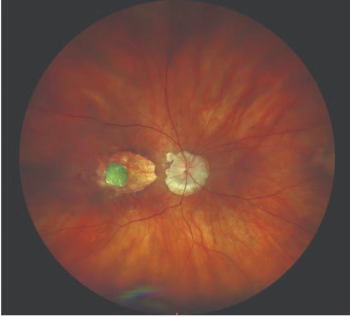
ARVO 2023: Association between visual impairment and neuropsychiatric symptoms of dementia
Researchers found in their analysis that visual impairment is associated with hallucinations, depression, agitation, and psychosis in patients with dementia, although, aging and comorbidities, among other factors, may be involved.
Melissa Li, MD, and Ali Hamedani, MD, MPH, from the University of Pennsylvania Perelman School of Medicine, Philadelphia, found in their analysis that visual impairment is associated with hallucinations, depression, agitation, and psychosis in patients with dementia, although, they pointed out, that aging and comorbidities among other factors may be involved. They reported their results at the Association for Research in Vision and Ophthalmology annual meeting.
The investigators explained that while visual impairment is a risk factor for cognitive impairment and hallucinations in older adults, associations with other neuropsychiatric symptoms of dementia have not been examined.
In light of this, they analyzed the cross-sectional data that represented the US population aged 70 years and older.
Patients had measured their vision using a near card and self-reported their results. The presence of dementia was ascertained through cognitive testing, and neuropsychiatric symptoms were screened using the Neuropsychiatric Inventory, a tool developed to assess neuropsychiatric syndromes in Alzheimer’s disease and other such disorders.
The investigators used logistic regression to measure the association between visual impairment and prevalent neuropsychiatric symptoms and adjusted for sociodemographic factors and comorbidities.
The analysis showed that 53% of the 332 participants with dementia had reported visual impairment; in 13% of these subjects , the best-corrected visual acuity was 20/60 or lower.
Dr. Li and Hamedani found that in theunadjusted models, the patients’ visual impairment was associated significantly with hallucinations (odds ratio [OR], 2.88; 95% confidence interval [CI], 1.12-7.44), depression (OR, 2.79; 95% CI, 1.7-4.57), and agitation (OR, 1.61; 95% CI, 1.05-2.48). In addition, they reported that reduced visual acuity was associated with hallucinations (OR, 5.56; 95% CI, 1.22-25.27) and psychosis (OR, 5.23, 95% CI ,1.47-18.58). However, the associations were no longer significant after covariate adjustment.
The investigators concluded that while visual impairment was associated with hallucinations, depression, agitation, and psychosis in this population with dementia, aging, comorbidities, and other factors may also play a role, indicating the need for further research. Broadening the knowledge of this topic may inform future clinical management strategies of dementia that address vision loss.
Newsletter
Keep your retina practice on the forefront—subscribe for expert analysis and emerging trends in retinal disease management.












































